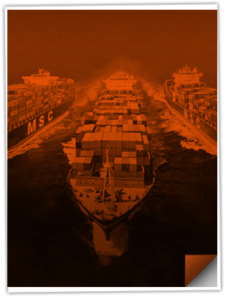Featured Headlines:
MRA Reached with Guatemala and Colombia
Mexican Trade Back in the Wild
MRA Reached with Guatemala and Colombia
- On Monday, U.S. Customs and Border Protection (CBP) signed a Mutual Recognition Arrangement (MRA) with the Customs Administrations of Guatemala and Colombia at the Trade Facilitation and Cargo Security Summit in Boston, Massachusetts.
- Guatemala and Colombia had previously agreed on a Joint Work Plan (JWP)— a document that lays out the path towards MRAs between the two customs administrations’ Authorized Economic Operator (AEO) programs—during 2022 Trade Facilitation and Cargo Security Summit, held in Anaheim, California.
- A JWP shows commitment from both programs, requires high-level support, and lays out detailed steps towards MRA.
- The document, referred to as an “arrangement,” indicates the security requirements or standards of the foreign industry partnership program, as well as its verification procedures, are the same or like those of the Customs-Trade Partnership Against Terrorism (CTPAT) program.
- The essential concept of Mutual Recognition is that CTPAT and the foreign Customs Administration program have established a standard set of security requirements that allows one business partnership program to recognize the validation findings of the other program and benefits both customs administrations and the private sector participants. Which makes world trade a safer place!
- Any questions? Feel free to reach out to our compliance experts!
What’s Happening, CBP?!
- Here’s some highlights from CBP in March 2023:
- Officials processed more than 2.7 million entry summaries valued at more than $274 billion.
- Identified 400 shipments valued at more than $122.7 million for further examination based on the suspected use of forced labor.
- Seized 1,798 shipments that contained counterfeit goods valued at more than $335 million.
- Completed 29 audits that identified $24.7 million in duties and fees owed to the U.S. government from goods that had been improperly declared.
- Collected over $33.1 million of this identified revenue from previous fiscal years’ assignments. BLECH!
Mexican Trade Back in the Wild
- On April 13, 2023, the Convention of International Trade in Endangered Species (CITES) announced that the sanctions on trade with Mexico are to be immediately withdrawn.
- The CITES sanctions had originally suspended all trade with Mexico of any wildlife or plant species listed under the international agreement, which was signed by 184 countries, effective March 27, 2023. The sanctions were put in place due to Mexico’s failure to control illegal fishing and trade that endangers the vaquita porpoise and totoaba fish.
- However, the sanctions were lifted by CITES after Mexico mapped out a plan to protect the endangered vaquita and totoaba from illegal fishing.
- As a result of the terminated sanctions, the U.S. Fish and Wildlife Service announced that the U.S. will resume normal trade relations with Mexico on April 14th.
- For more details on the compliance action plan of Mexico, please see the CITES website.
Draying the Long Game
- Many of you have noticed how difficult it is to find solid news on the drayage industry. Sure, you can find charming propaganda on carriers’ websites and in blogs, but full truckload (FTL) and less-than-truckload (LTL) get all the love in the press. So, thank you Inbound Logistics (IL), for reporting on the crucial, yet sometimes forgotten dray sector.
- IL reminds us that nearly 5,000 twenty-foot-equivalent units (TEUs) pass through the Top 25 US ports every hour—and that is in normal times. In 2022, it needed to be something like 20% more than that, but the system falters and even regresses during times of congestion. (Okay, okay, that was not only obvious, but it was the understatement of 2023 year-to-date (YTD)!)
- Well, we ALL certainly took notice of the drayage industry during Covid, as we waited impatiently for dray bookings and watched frantically as our cargo went on gleeful shopping sprees. An adorable split pick-up in this bag; several days of demurrage in this satchel; a nice collection of per diem here; a festive split return to go with the split pick-up there; and a backorder of detention to arrive on a shady invoice months later!
- IL has watched the drayage industry turn that pain and suffering into an opportunity to innovate. By directing yesterday’s solid profits to investments in visibility and communication tech tools, dray providers are driving to a better model.
- Industry experts estimate that the drayage industry is investing over 20% more in technology today than in 2020.
- For many drayage providers, especially one and two-truck operations, greater efficiency is a matter of life and death for the business. With severe inflation in the cost of equipment and repairs, newfound productivity and cost-effectiveness are the only paths to profitable viability.
- Among the greatest challenges for draymen is the variability of data systems and operational realities in their sector. Most ports, terminals and warehouses operate on different systems with variable hours of operation and physical realities. This means that dray carriers must have a dynamic and broad approach to collecting, analyzing, and utilizing the information needed to greatly improve effectiveness.
- Another terrific drayage challenge is finding bathrooms—especially clean ones. But that has nothing to do with this article, sorry…
- There is an interesting twist to the drayage story, so hang in there, impatient reader!
- Most industry pundits fear that the cost of equipment, repairs, and innovation will push the little guys out of the business, and that fear makes a lot of sense. However, those same pundits claim that we still have a labor problem in trucking, it is just being masked by current low levels of demand and activity. Hmmmm…
- Those one and two-truck firms need to hang in there until the demand rises enough to reveal the shortage of supply.
- We shippers look to the future and hope we can have our cake (decent drayage supply) and eat it too (efficiency defeating congestion and improving turns per hour).
Air Cargo Losing Altitude
- Why does every airfreight update feel like a poorly executed ECON 101 class? Because more supply plus less demand ain’t good for prices, that’s why!
- While it looked like air cargo volumes were stabilizing after Chinese New Year (CNY), since April Fool’s Day, global chargeable weight for air carriers is down 8%. This represents over 70% of the year-over-year (YoY) decline for the industry.
- YoY volumes for Europe, the Middle East, Southeast Asia, and North America are all down in double digits, with North America winning the dubious crown of “Worst Regional Performer,” coming in at a 27% YoY decline in volumes.
- Well, at least capacity growth is down, right? Wrong! YoY capacity, thanks to eager little travelers like us, noble readers, is up 12%.
- Raise your hand if you know what MUST be happening with global air rates! Okay, Wal-Mart, YOU answer (since we know you are a loyal reader of this award-winning gazette!).
- “Prices be down and such,” says Wal-Mart, and right they are! YoY global airfreight rates are down 35%, as the Asia Pacific leads the pack with a 41% decline.
- Ahhhh, but what is one thing that can help airfreight rates recover? Yup, huge plumes of volcanic ash disrupting the aviation industry!
- Russia’s Shiveluch volcano, closer to Anchorage than to Moscow, has been spouting debris seven miles into the air, creating visibility problems and other dangers for aircraft.
- From warfare to fire fare, those Russians sure know how to encourage inflation while disrupting the world’s transportation systems. Many Western press outlets have suggested that Russia “set off” the volcano on purpose…is that possible?!
Amazing About-Face?
Amazing about-face, how sweet the sound
That came to a forwarder like me
An I-L-W-U deal was lost, but now it’s found (?)
The PMA can finally see
Twas’ a strike that taught my heart to fear
And the JOC my fears relieved
How precious this new deal appears
Though can it be believed?
- Hot off the press! Several sources have indicated that the International Longshore & Warehouse Union (ILWU) has reached a “tentative agreement” with the Pacific Maritime Association (PMA) on the most essential aspects of their long and winding, long-winded negotiations. As with all modern stevedoring negotiations, the future of automation at US ports is considered the most difficult among a plethora of difficult obstacles.
- US shippers have grown considerably more anxious of late after LA/LGB shut down the night of April 6 and all-day April 7. Rumors have also simmered about work slowdowns, and good ol’ Local 13 in LA has been “red-tagging” cranes, which marks them as “unsafe” and slows port business (though who knows if some of those cranes are crooked?!).
- We hate to strike a cynical tone, especially after our tear-jerking rendition of “Amazing Grace,” but we’ll believe this deal is done when an actual bona fide new deal is announced, displayed, published, and carved in stone!
Carrier Deja Doo-doo
- Well, they did it, after all! Ocean carriers each INDEPENDENTLY came to the conclusion that spot rates to both coasts needed to come up $500 per box on April 15th (the tail end of contract season). Remarkably, these new rates are very similar to BCO contract offers and a touch above breakeven levels. Like OMG…the coincidence!!
- The need for these types of shenanigans is déjà vu all over again, gentle readers. Why does the pursuit of market share and full vessels always get our dear friends in the steamship business in the dangerous waters of low ebb rates? Why, oh why!?
- At the end of the day, a healthy steamship business is good for shippers, but in yet another case of déjà vu all over again (and again), we shippers have punished the carriers for their dizzying returns during the Great Cargo Surge, and now we want them to offer long-term rates below cost. Is this shrewd negotiation or pure cynicism? (Hint: the answer does not start with “shrewd.”)
- Hey, lay off, Shapiro. We shippers have to get the best deals we can, don’t we? Okay, okay, we’re doing it too; we’ll admit that much. However, having contracts that are less valuable, meaningful, and truthful than a Presidential debate is utterly pointless. When was the last time ANY of us trusted a contract? Maybe 2019? Maybe even before that, cynical readers!
- So, let’s get back to this April 15th nonsense…this GRI outcry is the tale of two coasts.
- For the West Coast, the carriers culled more than 25% of capacity, and now vessels are temporarily full, with some cargo actually being rolled. This means the carriers blanked too much capacity and have artificially spiked the rates for what could be a month or more. The bigger worry in the Golden State is the ILWU’s labor actions.
- For the East Coast, with so much pent up and newly arriving capacity, it will be much harder to hold the GRI. Vessels are maybe 85% full, despite some West Coast discretionary cargo shifting east. Without breaking every blank sailing record, it is hard to see the $500 sticking for long. The first carrier of the bunch dropped rates by $150 yesterday… though they are only giving that sweet deal to Shapiro (nah nah nah!).
- Oh, by the way, exactly TWO BCO’s fell for the spot rate spike maneuver! The poor fellows dwell under a rock and work for companies that disallow electronics on moral grounds. These two have POUNCED on $2700 to the USEC and $1700 to the USWC!



